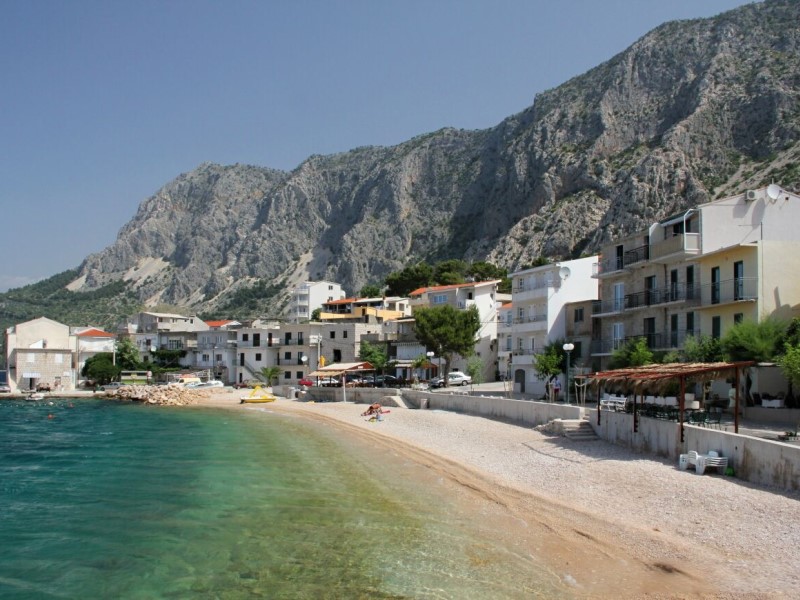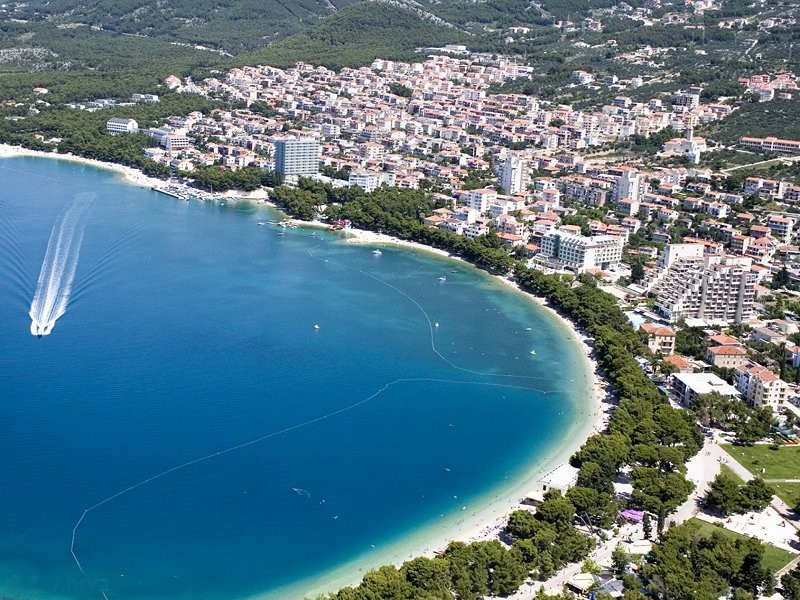Drašnice is a small place on the Makarska Riviera with 330 inhabitants and is ideal for vacation in the surroundings of an older fishing village around the harbor and the newer in the direction of Igrana. Near the long beach is the ‘Izbitac’ water source. Drašnice was first mentioned in 1477 as ‘Dračnica’.
Today Drasnice have grown into a lovely place alongside the shore with a beautiful harbor. Drasnice also offer water sport possibilities such as parasailing, waterskiing, jet-ski, rent-a-boat, etc. Beaches have small pebbles and are suitable also for small children.
For visitors who like swimming in natural surroundings there are small secluded beaches in nature with no houses around only about 1 minute drive away, it is also easy to walk there.
Very often you will be able to see charming dolphins, what particularly makes children happy.




